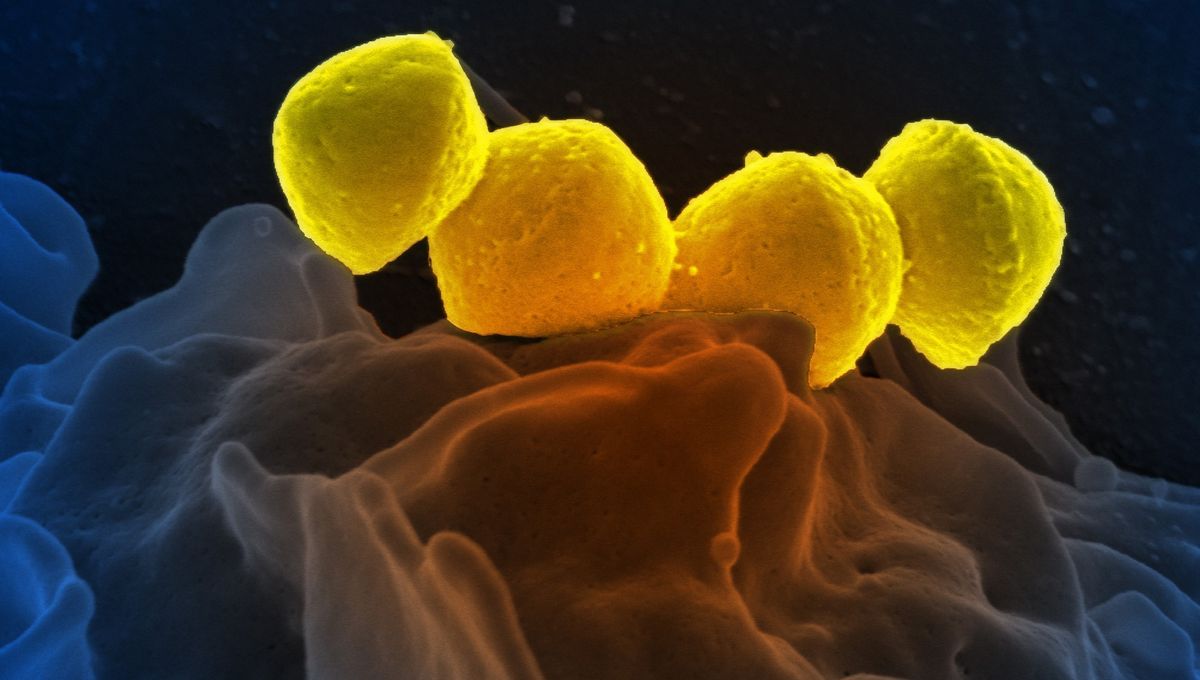
Japan’s National Institute of Infectious Diseases is reporting an upsurge in cases of a serious bacterial infection called streptococcal toxic shock syndrome (STSS). This rare but potentially fatal condition is most often caused by the bacterium Streptococcus pyogenes, and while other countries have seen outbreaks in recent years, the unusual case numbers in Japan are causing concern.
What is streptococcal toxic shock syndrome?
S. pyogenes, sometimes referred to as Group A Strep since it’s the most frequent cause of disease from this group of bacteria, is a microbe that can live quite happily on human skin but can also cause a range of diseases.
On the milder end of the spectrum, S. pyogenes is responsible for impetigo, strep throat, and scarlet fever. But it can also cause much more serious disease, such as cellulitis (a deep-tissue skin infection), “flesh-eating disease” aka necrotizing fasciitis, or STSS.
Anyone can get STSS, and in around half of cases it’s not clear how the bacteria entered the body in the first place, according to the Centers for Disease Control and Prevention (CDC). Still, there are some factors that can put someone at greater risk, such skin injury, surgical wounds, recent chickenpox infection causing open sores, and use of tampons.
What’s the situation in Japan?
While rare, small numbers of STSS cases are expected each year. However, Japanese authorities reported back in March that they had been seeing an increase in cases.
“There were 409 STSS cases caused by [Group A Strep] for the entire year 2023, and 335 [in the first 11 weeks] in 2024,” the report highlighted. “The number of reported STSS cases caused by [Group A Strep] has increased since July 2023, especially among those under 50 years of age.”
Recent data covering the period up to June 2, 2024 show there is no sign of the increase slowing down.
“At the current rate of infections, the number of cases in Japan could reach 2,500 this year, with a mortality rate of 30 percent,” said professor of infectious diseases Ken Kikuchi, speaking to the Japan Times.
What are the symptoms of streptococcal toxic shock syndrome?
According to the CDC, the first symptoms of STSS usually include fever/chills, muscle aches, and nausea/vomiting. The disease can then progress very quickly, so it’s important that anyone suspected of having STSS is seen by doctors as soon as possible.
Within 24-48 hours, life-threatening symptoms like low blood pressure, tachycardia, and organ failure begin to develop. Even with treatment, as many as three in 10 cases of STSS are fatal. Survivors may require amputations to remove infected limb tissue. Once someone has had STSS, they are at greater risk of developing the condition again.
Is there any way to prevent streptococcal toxic shock syndrome?
“Because chickenpox and influenza are risk factors for severe [Group A Strep] infection, vaccination against varicella zoster virus and influenza can reduce the risk of severe [Group A Strep] infection,” Dr Céline Gounder, editor-at-large for public health at KFF Health News, told CBS News.
Alcohol use disorder and injectable drug use also increase a person’s risk, so seeking treatment for addiction can help to mitigate that. However, it remains the case that most of the time, it’s not possible to pin down exactly what caused the infection.
One theory as to why we’re seeing more STSS now is a rebound effect after the lifting of COVID-19 restrictions. “The most likely hypothesis is that decreased circulation of the bacteria during the pandemic years left an immunity debt and the increase is related to that phenomenon,” Johns Hopkins researcher Dr Amesh A. Adalja told Healthline.
Whatever the cause of the uptick in cases, it’s important to be mindful of signs of infection and to seek treatment before things become more serious. Wound hygiene is of particular importance – if you get a cut or scrape, ensure the area is kept clean and watch out for redness, swelling, and increased pain, which could indicate an infection.
Knowing the signs can help you to spot potential STSS, as well as other serious complications of infection like sepsis.
All “explainer” articles are confirmed by fact checkers to be correct at time of publishing. Text, images, and links may be edited, removed, or added to at a later date to keep information current.
The content of this article is not intended to be a substitute for professional medical advice, diagnosis, or treatment. Always seek the advice of qualified health providers with questions you may have regarding medical conditions.
Source Link: A Rare, Deadly Infection Is Spreading In Japan – Here’s What You Should Know